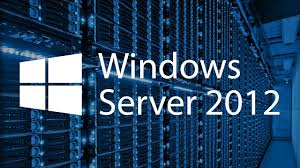Windows Server 2012 is a powerful and scalable server operating system that offers enhanced virtualization, storage, networking, and security features. Designed for modern IT environments, it helps businesses streamline operations, reduce hardware costs, and strengthen data protection—all within a robust Windows architecture framework.
Key Benefits of Windows Server 2012
1. Virtualization with Hyper-V
Hyper-V in Windows Server 2012 allows organizations to create, manage, and scale virtual machines efficiently.
Benefits include:
-
Reduced hardware dependency and cost
-
Simplified deployment of applications and services
-
High availability and disaster recovery options (via Hyper-V Replica)
2. Advanced Storage Management with Storage Spaces
Storage Spaces lets you pool physical disks into virtualized storage volumes.
Key Advantages:
-
Scalable and cost-effective storage
-
Redundant and fault-tolerant virtual drives
-
Ideal for growing businesses managing large data volumes
3. Improved Networking Performance with NIC Teaming
NIC Teaming aggregates multiple network adapters for increased bandwidth and fault tolerance.
Networking Benefits:
-
Enhanced network throughput
-
Load balancing and failover support
-
Greater network reliability
4. Enhanced Security Features
Security is embedded into the Windows Server 2012 architecture to protect sensitive data and ensure compliance.
Security Enhancements:
-
Dynamic Access Control (DAC) for granular permissions
-
Improved Active Directory with better automation and replication
-
BitLocker and AppLocker integration for data encryption and app restrictions
5. Centralized Server Management
The Server Manager in Windows Server 2012 supports multi-server management from a single console.
Management Benefits:
-
Remote administration of roles and features
-
Simplified configuration with unified dashboards
-
Automation support via Windows PowerShell 3.0
🛠 How to Take Advantage of Windows Server 2012 Benefits
To fully leverage Windows Server 2012 features:
-
Install the Hyper-V role to begin virtualizing workloads.
-
Set up Storage Spaces using the File and Storage Services in Server Manager.
-
Configure NIC Teaming under network adapter settings.
-
Implement security policies with Group Policy and DAC.
-
Use Server Manager to monitor and manage multiple servers centrally.
💡 Tip: Always keep your server updated with the latest patches from Microsoft to maintain optimal security and performance.
Related Questions About Windows Server 2012
What are the main advantages of using Windows Server 2012?
It offers improved virtualization (Hyper-V), dynamic storage management (Storage Spaces), advanced networking (NIC Teaming), better security (Active Directory, DAC), and centralized server management.
Is Windows Server 2012 still supported?
Windows Server 2012 and 2012 R2 reached end of support on October 10, 2023. Microsoft recommends upgrading to newer versions for ongoing updates and security compliance.
How does Windows Server 2012 support virtualization?
Through Hyper-V, Windows Server 2012 enables the creation and management of virtual machines, offering scalability, cost-efficiency, and high availability for enterprise workloads.
What is the role of Windows architecture in Server 2012?
Windows Server architecture includes kernel-level resource management, modular server roles, and integrated services like Hyper-V and Active Directory—all designed for enterprise-grade performance.
Conclusion
Windows Server 2012 offers a comprehensive suite of features tailored for organizations aiming to enhance operational efficiency, security, and scalability. Despite its end-of-support status, it remains a significant milestone in Microsoft’s server operating system evolution and a foundation for understanding modern Windows architecture.


